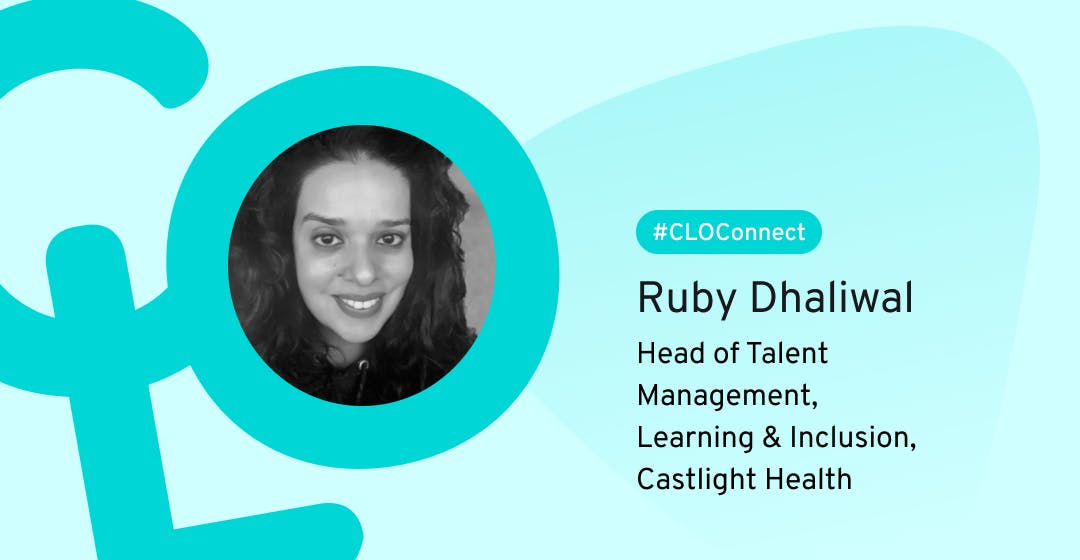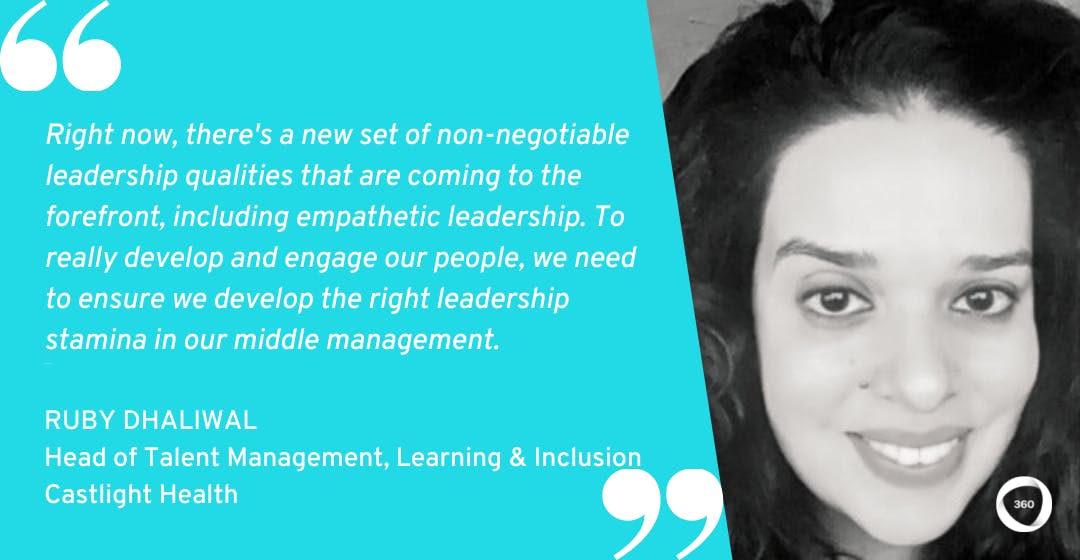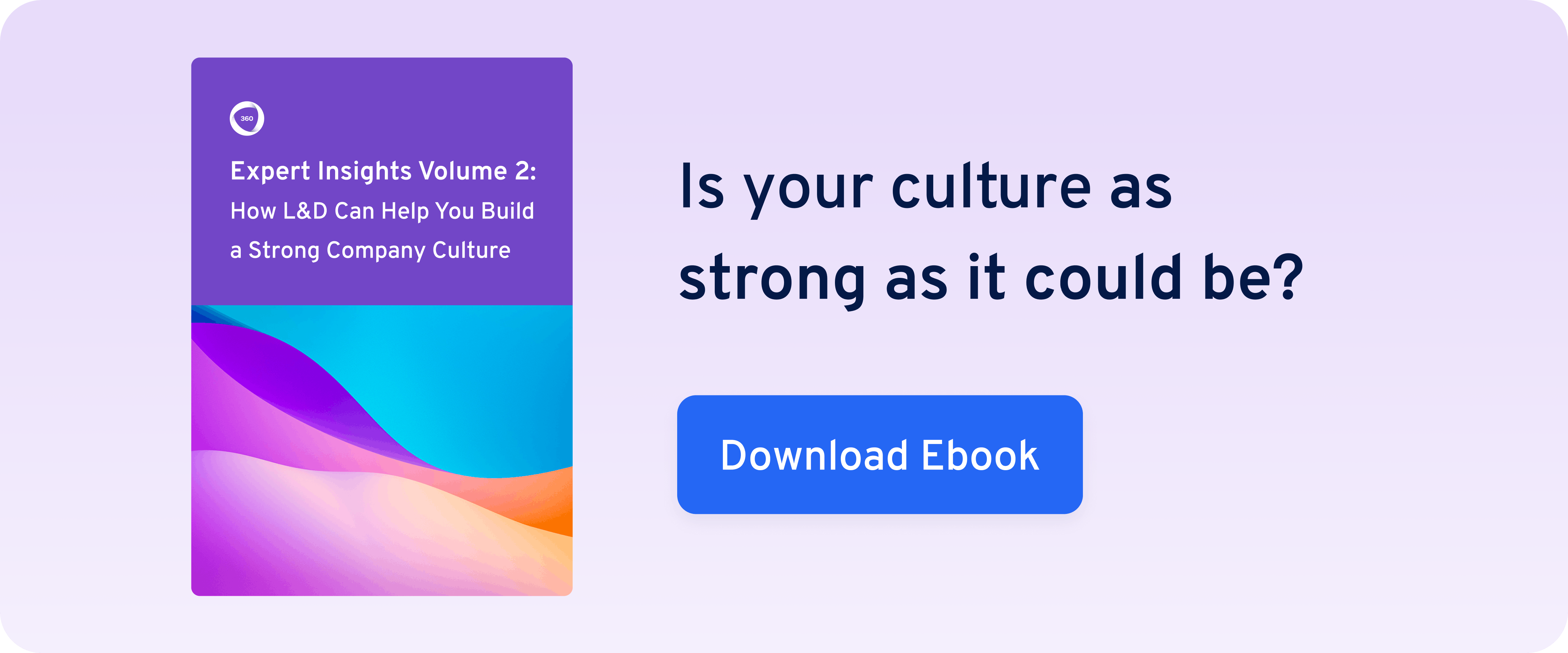
‘Leadership Stamina’: How Castlight Health Prepares Managers to Lead During the Post-Pandemic Era
It’s an understatement to say the world has fundamentally changed in the last 18 months. We’ve seen the shift to hybrid workplaces, the entry of Gen Z into the workforce, and a crazy range of advances in the technology we use every day.
As L&D leaders, it’s up to us to help prepare every one of our teams to thrive in our post-pandemic era. One set of learners in need of specialist L&D support? People managers.
Recently, I spoke with Ruby Dhaliwal, Head of Talent Management, Learning & Inclusion at Castlight Health, about the concept of ‘leadership stamina’, and her three learning pillars supporting managers to deal with the new demands and opportunities facing us today.
Ruby had a lot of fantastic guidance to share, from developing traditional leadership skills like coaching, through to honing ‘new world’ skills such as social responsibility and inclusivity.
Psst: We’re launching the CLO Connect community! Don’t miss out–join our waitlist now.
How Castlight Health is training people leaders to thrive
Ruby started our conversation with an important caveat. “The challenges and opportunities we’re facing as a company are not unique to us. A lot of companies are looking towards developing and empowering their people to rise up to the demands of the post-pandemic era.”
“The employee experience is changing so much, and employees are demanding a different set of capabilities within their leaders, specifically their people leaders. These leaders have to lean in and have conversations with their teams that they may not have had in the past.”
As Ruby explains, this is about soft skills as well as technical skills. “Right now, there’s a new set of non-negotiable leadership qualities that are coming into the forefront, including empathetic leadership. We know that to really develop and engage our people, and to keep them motivated, we need to ensure we develop the right leadership stamina in our middle management.”

So, why is middle management so important to Castlight Health? “Our middle management is our most diverse group of leaders, and they have so much influence on how the company operates and moves forward. They need to know how to empower their teams, and how to inspire their team members so that everyone knows exactly what they’re capable of achieving.”
“That’s one of the biggest opportunities we have as a company, because we have a great group of leaders who are hungry to learn more. Building this out is a great step forward in terms of how we tackle the new post-pandemic landscape.”
So, how does Ruby support Castlight’s people managers to learn and thrive? It’s all about her three learning pillars.
You can never have enough expert insights! Check out our ebook to find out How L&D Can Help You Build a Strong Company Culture
Castlight Health’s 3 learning pillars for great people management
For Ruby, the COVID-19 pandemic helped bring Castlight Health’s leadership development priorities into focus. “In the past, we haven’t had a specific programmatic approach to leadership development,” she says. “That’s because our priorities were different.”
“Now, we’ve realized that we need to really build and enhance our leadership as a group of people. We need to be a bit more innovative, finding new ways to engage this large group of individuals to keep them connected and engaged throughout the learning experience, even outside of the classroom. It’s no longer just one program; it’s more of an experience.”
As Ruby explains, this innovative approach called for a new program design. “We looked at the design of the program in terms of the company’s priorities and the key capabilities and skills we want to develop as a company, both from a traditional management standpoint and a ‘new world’ standpoint. Then, we split this approach into three learning pillars.”
1. Traditional leadership skills: coaching and performance management
“First up, we’re focusing on the traditional people leadership skills such as coaching and performance management. These core skills are still very important for our managers and leaders, and we want to make sure we’re offering the right level of support here.”
2. ‘New world’ skills: social responsibility and inclusivity
“Our second pillar focuses on what we call ‘new world’ skills. Questions around societal and environmental responsibility are coming up more and more, especially with new generations entering the workforce. These are the types of conversations that are important to them, and our leadership training needs to prepare people for that.”
For Ruby, it’s important to offer practical advice. “We talk a lot about inclusion, but what does the concept really mean? It’s such an intricate piece of leadership, and sometimes I think leaders get overwhelmed with questions. That’s why we’re discussing these concepts in a way that can be easily understood, digested, and practically applied.”
Questions around societal and environmental responsibility are coming up more and more, especially with new generations entering the workforce.
3. Knowledge of company strategy
“Our third and final pillar is focused on company strategy,” says Ruby. “We’re boosting the ability of our people leaders to talk about Castlight so that their team members understand the contributions they make towards our shared goals.”
And beyond these three pillars, Castlight is also taking steps to keep people leaders engaged, connected, and inspired–even when they’re learning from a distance.
Related: How Amplitude’s L&D and Engineering Leaders Team Up to Codify What ‘Great’ Looks Like at Scale
We’re boosting the ability of our people leaders to talk about Castlight so that their team members understand the contributions they make towards our shared goals.
Keeping people leaders engaged and inspired through learning
“In this new landscape, we’re all quite remote and dispersed,” says Ruby. “We have our India team engaged in this too, so we’re thinking hard about time zones and other practical considerations.”
“To keep our people leaders engaged, we have an online portal which houses all of the different content for each of the different modules that the people leaders will go through. This includes learning resources, templates, and ‘mini experiments’ people can do with their teams.”
“At the very end of each module, we come together in what we call a ‘coaching corner’ per cohort. We talk about the skills people have learned, what really stood out for them, how they’ve applied it, and what they’re planning to do differently from now on.”
For Castlight Health, these exchanges are proving useful. “These conversations are always so robust, and the feedback we’ve received tells us our learners are finding a lot of value in the cross-pollination of ideas and experiences through sharing during these sessions.”
“We’re trying to recreate the experience of the classroom environment through these coaching corners, and having them in extremely diverse cohorts. We’re supporting not only the cross-pollination of ideas and practices, but the cross-pollination between different business units, different experiences, and different ways of thinking.”
Related: Snap’s 3 Techniques for Making New Sales Reps Feel Connected to Their Teams from Day One
We’re supporting not only the cross-pollination of ideas and practices, but the cross-pollination between different business units, different experiences, and different ways of thinking.
Building new connections between learners
For Ruby, this training is also a fantastic way to build new connections between leaders. “We want people to understand that they’re not by themselves on an island. It’s easy for leaders to think they’re the only ones going through a particular experience. In fact, one of your peers may be going through the same thing, but in a different context.”
“When we’re having these ‘coaching corner’ discussions, I always see our people leaders frantically taking notes, because it’s important to them. To be, that’s the biggest win of all, seeing those ‘aha’ moments take place–even in a remote environment.”
As Ruby explains, she also incorporates peer learning into her training. “We use buddies or accountability partners to help people share ideas, reflect on what they’ve learned so far, and ask questions of each other.”
“People may not have known each other before the training, but they can learn so much from sharing. As a learning leader, it’s music to your ears when you hear this, because you know that those are the types of behaviors that are going to really stay with people in the long-term.”
Related: How We Use Peer Learning to Keep Our Company’s Competitive Edge
People may not have known each other before the training, but they can learn so much from sharing. As a learning leader, it’s music to your ears when you hear this.
How Castlight Health is making an impact for people leaders
Castlight Health has designed a great training program for people leaders–and now, that program is making a real impact.
“To keep track of our impact, we’ve built key pieces of data into the program at a number of levels,” says Ruby. “We’re running pre and post assessments before and after the modules, so we can track learner development. This gives us a great measure of whether we’ve had skills uptake, and whether people understand the value of certain leadership concepts.”
“What I’ve observed so far is almost a one-point jump from pre to post in terms of skills acquisition. For me, that’s tremendous. We really want to see the longevity of what people have learned, and how they’re applying it in their leadership roles.”
“We want these new capabilities to cascade throughout the business, and for our leaders’ team members to really notice the difference. These impacts then filter down into our long-term metrics, such as attrition and retention. That’s been of tremendous value.”
One other positive impact? “We’re seeing a greater willingness of people to contribute to the community of learners, which may come in the form of templates, forms, or other resources that have been of value for particular learners. It’s tremendous to see this happening.”
Related: 3 Data-Based Ways to Prove Training ROI (+ Free Training ROI Calculator)
What I’ve observed so far is almost a one-point jump from pre to post in terms of skills acquisition. For me, that’s tremendous.
Thanks again to Ruby for so generously sharing her knowledge and insights with us!
If you’re looking for more great stories about supporting leaders with great L&D, check out our roundup post on 5 ways L&D teams can support company leadership, as well as Adam Opegaard’s 3-step process for encouraging better management training at Tower Loan.
Want more peer insights on transforming workplace learning? Join the waitlist for our CLO Connect community, and check out our other #CLOConnect interviews with top L&D leaders on driving growth and scaling culture through Collaborative Learning. Or you can subscribe (below 👇) to our weekly newsletter to receive our latest posts directly in your inbox.


